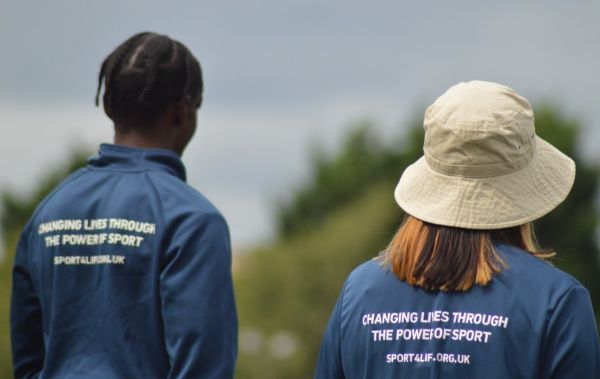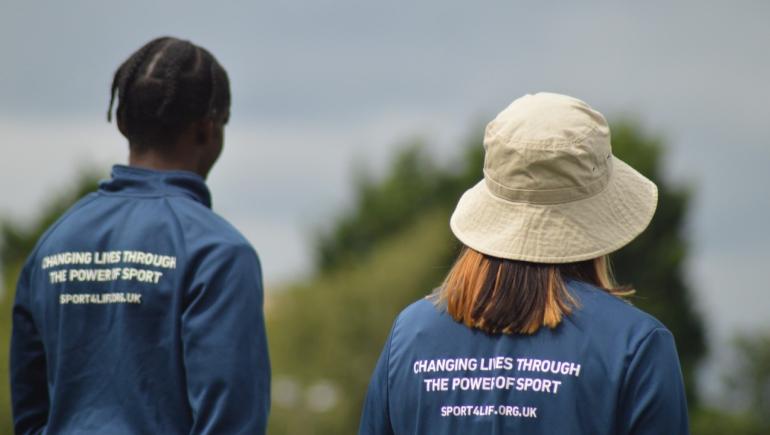 In sectors squeezed by funding cuts and increased competition, collaboration is now our biggest asset says Tom Clarke-Forrest, the Chief Executive of West Midlands-based employability charity Sport 4 Life UK.
In sectors squeezed by funding cuts and increased competition, collaboration is now our biggest asset says Tom Clarke-Forrest, the Chief Executive of West Midlands-based employability charity Sport 4 Life UK.
The spheres in which we (and many others) operate – sport for development, youth and employment support – are facing unprecedented challenges: funding is scarce, competition is fierce, and the needs of the communities we serve are growing. In this landscape, how can we not only survive, but thrive? The answer, I believe, lies in collaboration.
So what are the challenges?
The challenges facing social enterprises, social businesses and charities are multifaceted and deeply concerning. Through the sport lens, Sported's recent ‘Community Pulse’ insights stated that “grassroots sport needs more backing in order to avert the risk that many community hubs will be lost to economic pressures with local organisations insisting there isn’t enough investment to maximise its impact at a community level”. On top of sport for development funding challenges, through a youth lens, there has been a reported £1billion cut (73% fall) in Local Authority youth services spending in England since 2010 (YMCA’s ‘Beyond the Brink’ report), prompting UK Youth to urge the Government to increase spending immediately. Similarly, the popular National Citizens Service (NCS) programme has been shelved from April 2025 as part of Lisa Nandy’s new DCMS budget – something we at Sport 4 Life UK know only too well, as we face a cliff-edge contract challenge from April, leaving over 1,000 young people annually without this provision.
And it’s the beneficiaries on the ground who could suffer – young people like Kit, who Sport 4 Life UK supported through sport and physical activity, qualifications and one-to-one mentoring, activities that led to Kit reflecting: “the organisation helped me envision a future I couldn’t see before.” Read Kit’s story.
More broadly, these challenges appear ubiquitous across the wider Third Sector. High-profile organisations like Children England and House of St Barnabas have recently closed their doors, as well as valuable infrastructure bodies like Getting on Board and Development Initiatives. Not far behind these emergency cases are literally thousands of charities reporting concerns about their financial health. Research by Pro Bono Economics and Nottingham Trent University indicates that 32% of charities are anticipating a worsening financial situation in the coming years, with one in five being forced to “cut back on the number or scope of services they offer”. Charity Finance Group (CFG) has found that “the impending impact of the increase in Employer National Insurance Contributions (ERNICS) and raising of the minimum wage are causing ‘moderate to severe’ levels of concern in eight out of 10 charities (84%)”, and over 7,300 charities signed ACEVO and NCVO’s letter to the Chancellor raising concerns about budgetary changes and financial challenges. Looking at organisational size, The Centre for Social Justice's ‘Underfunded and Overlooked’ research showed that of the 921 charities that closed in 2024, 904 had an income below £1milllion, showing the challenge faced by smaller organisations.
Experts will argue over the necessity of these changes, and the need to balance the books and make brave decisions for the long term, but what can’t be argued is the scale and complexity of the UK charity sector funding challenges.
Whose responsibility is it to fix?
Many point the finger at Treasury investment. If Government departments are increasingly reliant on the non-profit sector to deliver essential services, shouldn’t this be coupled with adequate funding? If the benefit to civil society and social return on investment is so strong – as is explicitly articulated in Sport England’s recent ‘Social value of sport and physical activity for England’ report that estimates an annual social value of £107.2bn – then aren’t long-term cuts a vexatious own goal? If the Chancellor has promised to “reset the relationship with civil society and build a new partnership to harness the full potential” by developing a ‘Civil Society Covenant’ which recognises the sector as a trusted and independent partner, then shouldn’t this covenant be backed by cash?
Others believe that funders (like grants, trusts and foundations) need to step up and support the vital work of the sector. Whilst many take time to review their objectives, priorities and direction of travel – which should be welcomed – the timing of so many to do so now, against the backdrop of such challenging times, is certainly a curious one. This is explored in more depth in The Benefact Group's Charity Podcast Series, with guest and charity expert Felicia Willow looking at the recent ‘funding freeze’ that is negatively impacting the sector (which you can listen to here.
Funders are there to fund, not to immerse themselves in overly bureaucratic and contentious introspection.
Or perhaps some responsibility lies with individual donors and philanthropists, who have the financial muscle to contribute strategically.
Whilst clearly these external factors impact on an organisation’s ability to survive and thrive – it would be reductive to attribute the ‘blame’ or responsibility to this alone. It’s more nuanced and complex. No organisation, whether social sector or business sector, has a divine right for perpetual funding from the public purse, an immunity from austerity, or an expectation of effortless growth and success. In fact, it is precisely during these challenging times that organisations have a need – and responsibility – to innovate, to think differently, to pivot, to diversify income, and to question the status quo.
How can we do more with less? Where is there a gap in the market? How can we think outside of the box?
A collaborative future
In this challenging environment, charity financial sustainability strategies demand collaboration. By pooling resources, knowledge and expertise, organisations can achieve a greater impact than they could alone. And the benefits of doing so are well documented – increased efficiency (by reducing overheads and maximising the impact on limited funds), expanding reach (tapping into new networks and reaching a wider audience), enhanced innovation (through diverse perspectives), a stronger voice (by amplifying advocacy efforts and influencing policy through a united front) and ultimately improved service delivery.
But how is this done practically? And what are we doing differently?
At Sport 4 Life UK, our current strategy is attempting to respond to the complex concoction of challenges the sectors in which we operate are facing. As an organisation with an 18-year track record of direct delivery, the obvious growth journey is to continue our organic growth into new geographical areas, as a deliverer. But this isn’t necessarily what the sector needs. If we were to continue to parachute into new communities, we’d invariably be treading on toes and reinventing the wheel in a sector where the infrastructure (arguably) already exists. There are a number of brilliant organisations already firmly embedded in these new areas, and our role needs to be to support them, and reach young people indirectly. That’s why, since April 2024, following a successful pilot, we launched our ‘Impact Partners’ model.

Through this initiative, we have formed a network of game-changing sport for development organisations that are delivering impactful sport-based employability outcomes and positively engaging young people, but that are also more hyper-local and primed for growth. By drawing on our blueprint and track record, we then support them with key capacity building and organisational development on the areas that we know will make the biggest difference – good governance, strategy, impact management, marketing and funding.
We give them the tools they need to transform their impact, increase revenue, develop their governance, and ultimately, change more young people’s lives. So far, the data is encouraging - organisations have an ‘uplift’ of >25% in their revenue, staff numbers and outcomes.
Read the rest of Tom's blog here.











